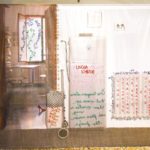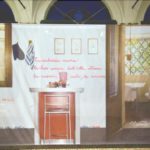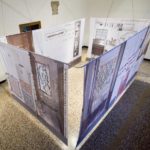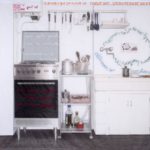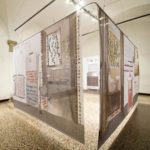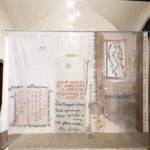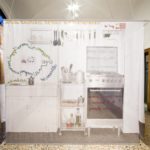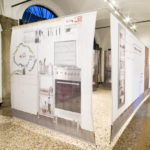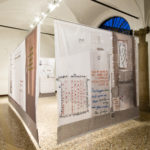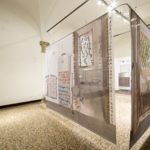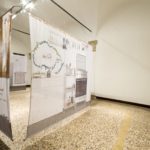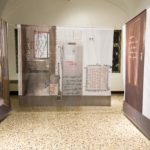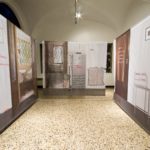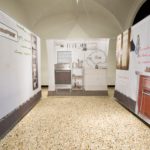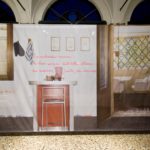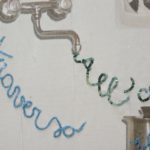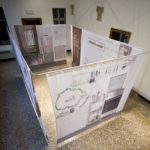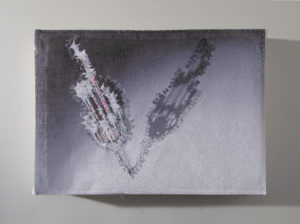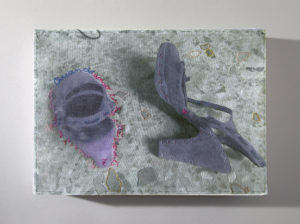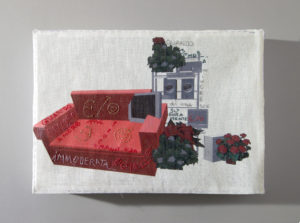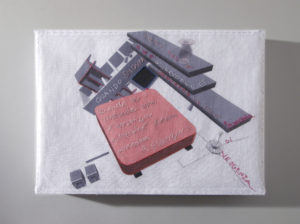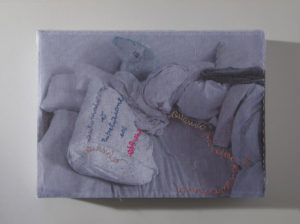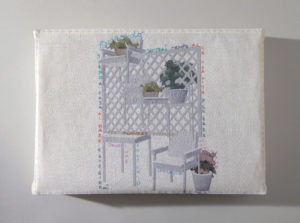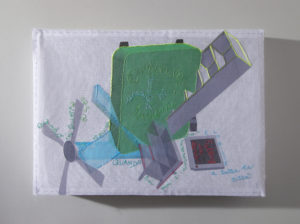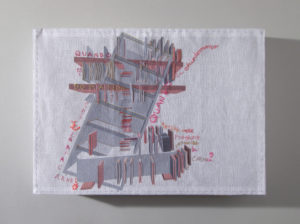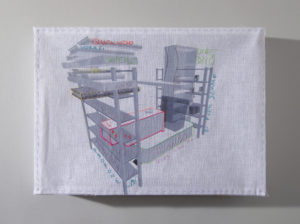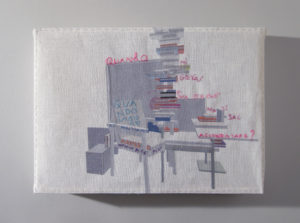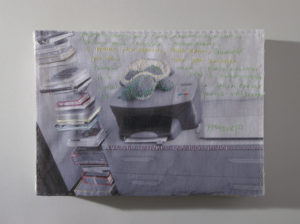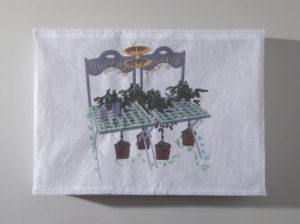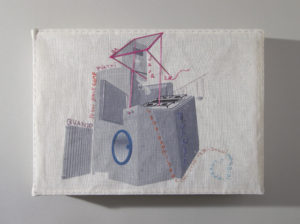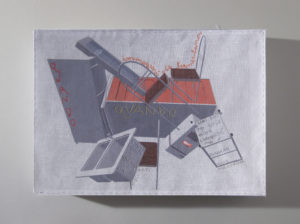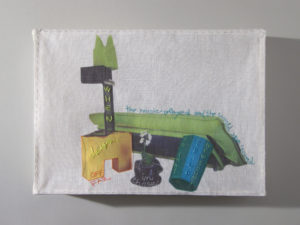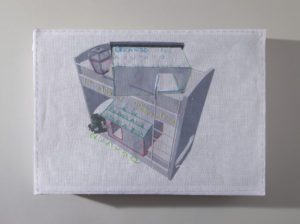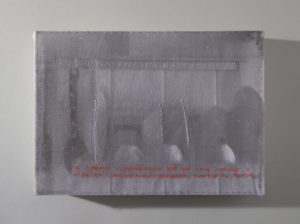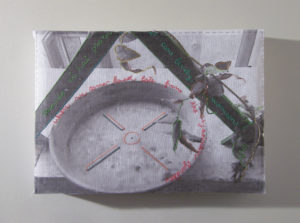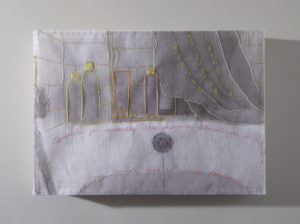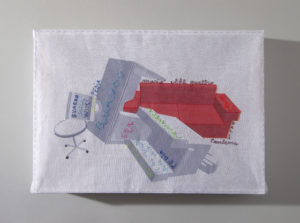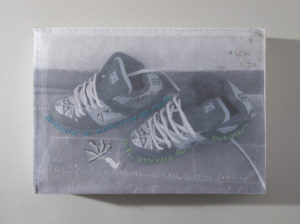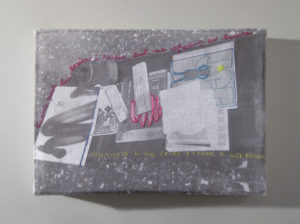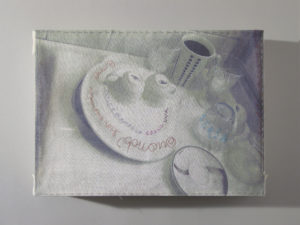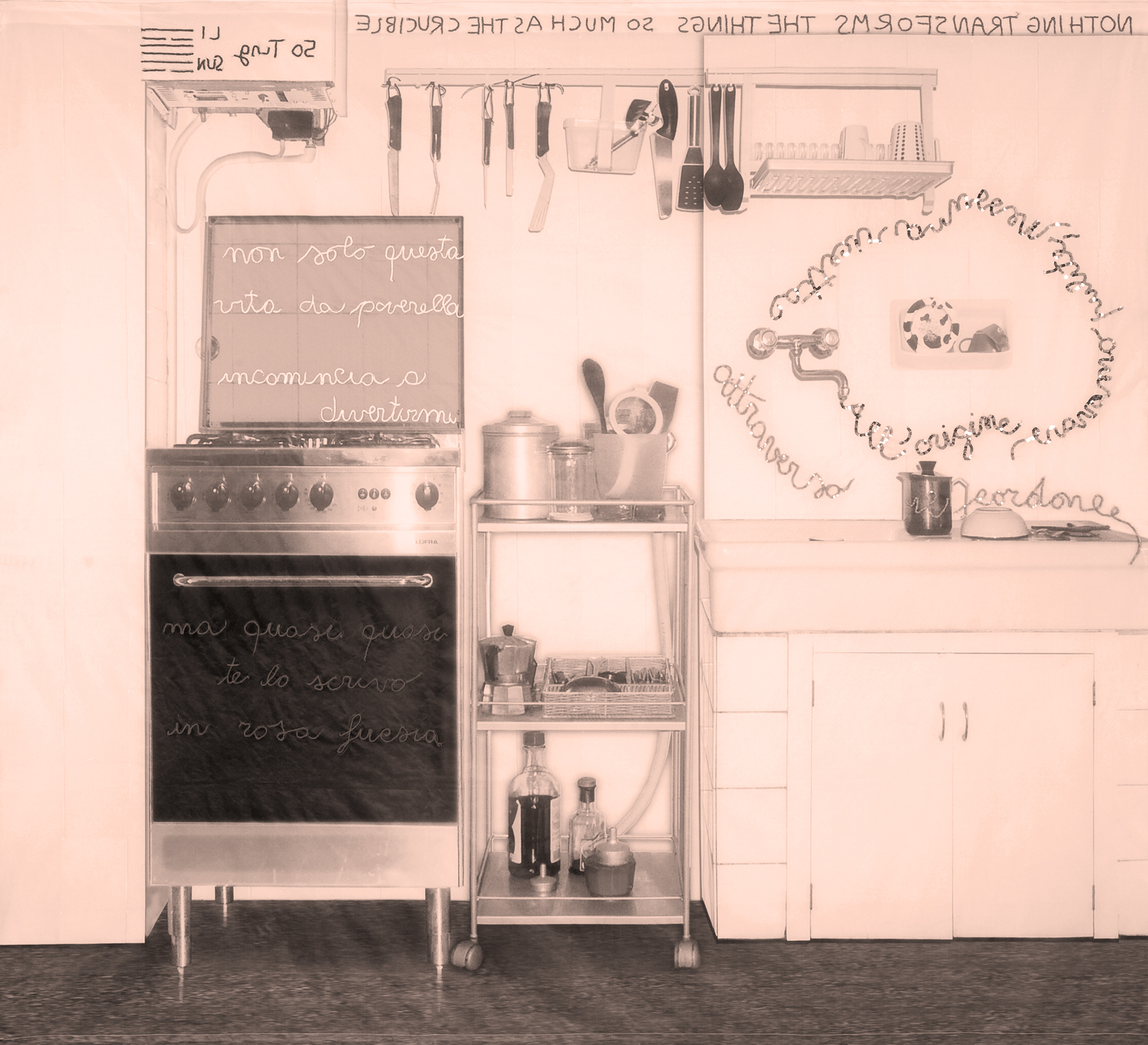
Walking words 2009
- wp_7961204
- 0
- on Apr 13, 2017
Mostra personale di Marina Gasparini negli spazi della galleria Corraini: un’installazione di grandi dimensioni, opere su tela realizzate dal 2008 al 2009, e un video. Nucleo dell’esposizione è un’installazione, Walking words on four walls, che riproduce fotograficamente su tessuto le pareti di una stanza (nello specifico, la cucina dell’artista in scala 1:1). Ricamate sulle pareti stesse, frasi tratte da opere di Michel de Certeau e delle giovani poetesse Elisa Biagini e Valentina Pinza. L’ambiente della cucina viene così ricreato attraverso trame e trasparenze che lo rendono pienamente percorribile non solo fisicamente, ma anche con lo sguardo e la lettura. Le frasi e i discorsi, che nella realtà si dissolvono immateriali nello stesso momento e luogo in cui nascono, sono ora “cuciti addosso” agli oggetti che li circondano. Accostando attività artistica e letteratura, la ricerca di Marina Gasparini si presta ad essere definita una riorganizzazione tattile e visiva del testo e del discorso: attraverso il linguaggio, una possibilità di fissare (e sfuggire) il ripetitivo e inconscio navigare nelle “cose” di tutti i giorni.
Ugualmente nata dalla combinazione di attività artistica e letteratura, la serie Quando raggruppa panorami domestici in tessuto di piccole dimensioni. Le frasi ricamate sono ancora la traccia tangibile della frammentazione del pensiero che segue alle situazioni di improvvisa incertezza.
A completare l’esposizione, il video a fior di pelle descrive invece il viaggio fantastico di un filo rosso, originariamente usato dal cartografo per indicare una strada principale su di una mappa, fino a formare frasi precariamente cucite in una realtà immaginaria.
Walking words 2009. 430x250x218 stampa fotografica su tessuto, ricamo, pailettes
This work is part of a project entitled “Walking words on four walls”, which digitally reproduces the walls of a room on fabric, on a scale of 1:1. Specifically, it is the kitchen as a metaphor of the environment that is experienced and inhabited by man. In transparency we can read various phrases sewn onto the work, which provide an “external” and “internal” interpretation of each wall. On the image are represented the basic, everyday appliances of a kitchen seen as a source of energy of the human body, in its primary elements: water and fire; but the energy that the environment, if properly managed, could provide for man, in the future as well, is not only physical and material. Thought, the density of some languages that are more than mere codes for communicating (a verse from a poem by Valentina Pinza flows out of a tap and describes and “rewrites” a fundamental natural bond between mother and daughter), and desire (evoked by the manual and material interventions that belong to feminine traditions) are powerful non-material energies that have implemented civilisation in all ages. On the upper part of the canvas is also found the wisdom of the I Ching, which tells us that “everything stays the same” as a symbol of the “crucible” and that waiting until things evolve can be, and perhaps must be, a part of the price. Another value, no longer current but which is destined to regain its attraction, and perhaps even its creative potential, is saving. This is evoked by the writing of the oven of this Franciscan kitchen, which not only invokes that ancient dualism of necessity-virtue but inscribes it into the context of a condition that is almost desirable. The environment, then, is no longer an alien or abstract element of consciousness, but the site that lends itself to an “eroticism of knowing”, as De Certeau would say in L’Invention du Quotidien, or better, to a tactile and visual reorganisation in which “discourse is produced”.
Digital photography on fabric. Detail 218 x 248 cm
Quando 2008 20x30x4 cm ognuno. Stampa digitale su lino
The noise coming from the street under the artist’s flat is the red thread leading on a journey through the mountains and the desert, where the thread end his trip embroidering his story on the flying walls of a nomadic house
